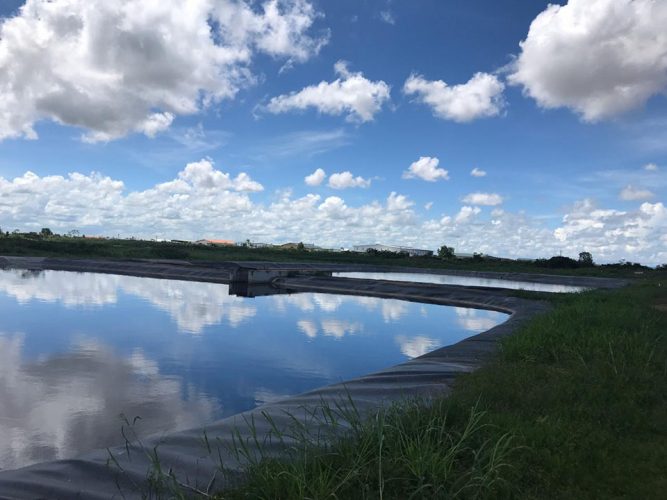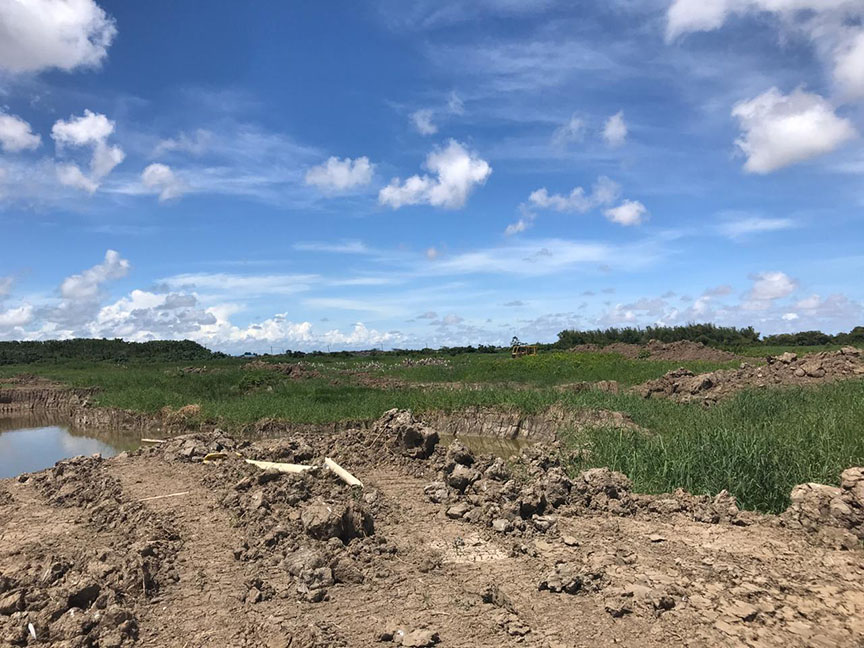The construction of the second cell at the Haags Bosch Sanitary Landfill is expected to be completed by next January, according to Site Manager Lloyd Stanton.
During a tour of the landfill’s operations yesterday, Stanton said the completion of the second cell would pave the way for the closure of operations at cell one.
“As you can see, the first cell is coming to an end and will only work for the next two to three months,” he stated.

Currently, works are in progress and materials are on site to advance the construction.
Additionally, Stanton explained that the management of the landfill has been able to put systems in place for steady monitoring of facilities and has introduced regular testing of groundwater. As a result, he explained that the testing of the leachate, surface and groundwater is done quarterly to ensure that they are operating according to environmental standards.
Presently, samples are collected and tested from 13 areas at the landfill. The Environmental Protection Agency (EPA) is also working in partnership with the management of the landfill.
The internal roads at the landfill have also been upgraded over the past year, making it easier for access by garbage disposal trucks and other vehicles.
Furthermore, Stanton said that they will soon be seeking funding to engineer a wetland. “…We will be moving to construct an area of engineered and biological wetland, where we will have special grass that we will used as indicators to know if the leachate is good enough to be led into the drainage canals…,” he explained.
After the garbage is placed, compacted and covered, it is left to decompose until it is safe and no longer hazardous but the decomposing garbage, especially during the rainy season, has [a] high level of moisture that produces a lot of leachate, which goes into the drainage system at the bottom of the cell, Stanton explained.
After it goes into the drainage, it is then carried to the treatment ponds, where it goes through two types of treatment before it is eventually led into the drainage system.
“The substance is pumped into two semi anaerobic ponds, after which it is processed for several days, allowing the heavy particles to settle to the bottom of the 20 feet deep ponds.
Over 450 tonnes of garbage generated by the city and the East Bank of Demerara are discarded at the landfill on a daily basis.
Stanton further noted that they are currently conducting an assessment of other dumpsites across the country to determine which can be upgraded to landfill sites.
“We are currently assessing dumpsites to determine what can be upgraded and what will remain dumpsites. We are also looking at central hubs for smaller communities to implement a similar operation like what we have here, where all the waste from different locations comes to one area,” he said.
He noted that recently three contracts were signed for dumpsites in New Amsterdam, Bartica and Lethem to be upgraded into landfill sites. He also indicated that soon a dumpsite at Rose Hall, Corentyne will be converted into a landfill site.
Meanwhile, Stanton indicated that while they have seen materials that can be used to generate alternative sources of energy, it is uneconomical to embark on such a venture.
He noted that while at present they have a large volume of stockpiled material that can be used and converted into energy, there is not enough to sustain an operation in the long term.
He said that they have been able to extract bio-methane gases and nitrogen but it is not being produced in a quantity that would be commercially viable.
He explained further that since 2011, they have accumulated a large stockpile of tires and while they can be recycled Guyana does not have the system in place to do so.
The tires, he said, can be used in the production of asphalt and other processes. “But then, the stockpile will be reduced in less than a year. Where do we get the number of tires from to sustain the operation?” he questioned.
In addition, Stanton also stated that Guyanese need to consider and change their methods of waste disposal.
He said that there is a national culture of carelessly disposing of waste. “If we buy a bottle or water and we drink and a little is left over, we throw it in a bin. In developed countries, you throw the liquid out first and then dispose of the bottle,” he noted.
He indicated that high moisture content in waste makes it expensive to properly discard. “It will use a lot more fuel, a lot more energy to burn the waste because it is wet. So, there is a lot of ideas toying with waste to energy. The whole talk of waste to energy or recycling comes with a lot of challenges. We, as a country, need to change our disposal practices…,” he added.






